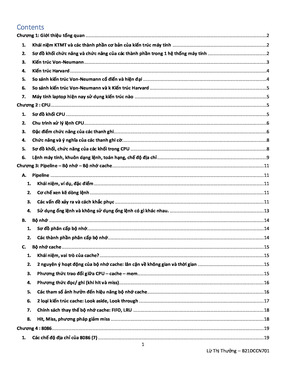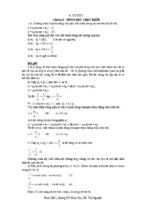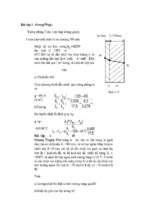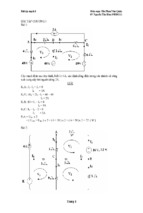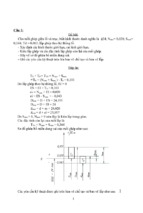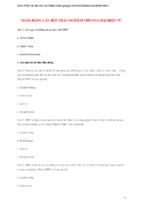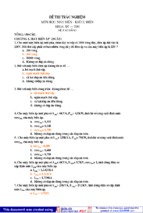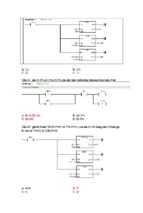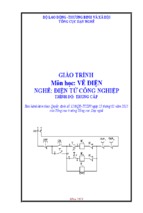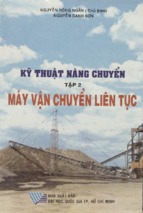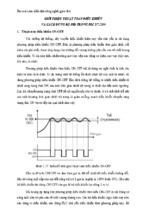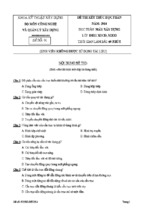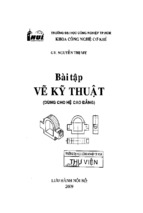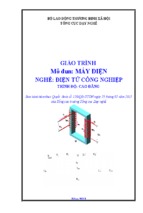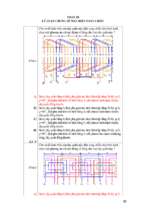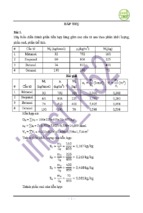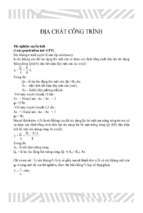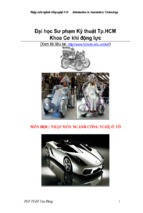v r "h
UPPSALA UNIVERSITET &
UNIVERSITY OF ECONOMICS &. BUSINESS, VNUH
.***
UPPSALA
UNIVERSITET
VNU-UEB
^^iM^^
MASTER THESIS OF MPPM
CUSTOMS IN THE DEVELOPMENT OF THE
CROSS BORDER ECONOMIC
COOPERATION ZONE BETWEEN KIM
THANH (LAO CAI-VIETNAM) AND
BEISHAN (YUNNAN - CHINA)
Authors:
Hoang Kim Thang
Cao Sang
Supervisor:
Prof. Lars-Torsten Eriksson PhD
Local Supervisor: Dr. Nguyen Anh Thu PhD
Class:
MPPM INTAKE 6 - Group 18
Hanoi, M a y - 2 0 1 3
ACKNOWLEDGEMENTS
First and foremost, I would like to express my sincerest gratitude to
Prof Dr. Lars-Torsten Erikson and Dr. Nguyen Anh Thu who, even under
pressure of their own tight working schedule, spent the most valued advice
and shown generous support on my thesis.
I also would like to thank all of faculty members in charge of MA
course in Public Management, especially foreign specialists whose solid and
extensive knowledge have provided us with interesting and useful lectures
throughout 18 study months.
The paper may not be prepared, completed and then presented without
enormous motivation and facilitation by other instructors and administrators
of University of Economics and Business - Vietnam National University,
Hanoi. I am so glad to have chance to work together with them.
Last but not least, they are my colleagues, my family and friends who
help me much to optimize my limited time and then offer their inputs and
comments for me to get the thesis completed. Of my most grateful words are
saved to them.
ABSTRACT
Title: "Customs in the development of the cross border economic
cooperation zone between Kim Thanh (Lao Cai - Vietnam) and Beishan
(Yunnan - China)"
Level: Thesis of the master program in Public Management
Authors: Hoang Kim Thang and Cao Sang
Instructor: Prof Dr. Lars-Torsten Erikson and Dr. Nguyen Anh Thu
Defense day: 18/05/2013
Goals: The cross border economic cooperation zone "one area for two
countries, the closed connection" is a new approach of Vietnam to carry
out the goals of expanding the economic corporation among neighbor
countries, including China. Kim Thanh cross-border economic corporation
zone (Lao Cai - Vietnam) and Beishan (Yunnan-China) w^hich is being
searched and built is one small piece of the whole picture about Vietnam China economic relationship. Facilitating import and export goods
activities, in which the Customs' role and tasks to boost investment
cooperation, opening Lao Cai for the national dexelopment when
Vietnamese finns are still distressed by aftershocks of the global economic
crisis, is now an essential problem. The Customs have to seek solutions to
facilitate trade as well as tightly control objectives. Therefore, the authors
decided to choose the topic: " Customs in the development of the cross
border economic cooperation zone between Kim Thanh (Lao Cai Vietnam) and Beishan (Yunnan - China)'' to be the topic of our Master's
thesis.
Methodology: The authors used the following methods:
Research methodology: The authors used the method of modeline to
facsimile the future customs model. This method includes: building model
develop the model based on analyzing the collected data and examine the
results through questionnaire and direct interviews.
Collecting data method: researching documents (desk-study method) and
survey method, collecting primary and secondar>' data. The study used the
secondary data to fmd out the real situation of the Customs model in Kim
Thanh cross-border economic corporation zone (Lao Cai-VN) with
Beishan (Yunnan-China), simultaneously fmd out the theoretical problems
of the cross-border economic corporation zone. In addition, to collect data
to answer the main research questions, the study used primar\' data with
practical surveys by questionnaires and cards inter\iewine directlv
businesses and individuals to record their comments, suggestions for the
model of the cross-border economic corporation zone.
Quantitative data analysis method: the research used descriptive statistics
to assess the sense of organizations, businesses and individuals about the
cross-border economic corporation zone between Kim Thanh (Lao Cai Vietnam) and Beishan (Yunnan - China). The thesis also used SWOT
model and the feasibility to enhance the efficiency of the model. In
addition, the multiple regression method were used to assess impacts of
researched element groups on effects of the Customs model. The analysis
was perfomied with SPSS software version 11.5.
The qaestiomiaire to collect data: To collect data for answering four
research questions, the writers developed the questionnaire with 20
questions. Their content and measurement are in the questionnaire.
The inteni'ewing cards to collect qualitative data: Those cards are for the
more objective and comprehensive view about the Customs model and the
cross-border economic zone between Kim Thanh (Lao Cai - Vietnam) and
Beishan (Yunnan - China).
-
Method
of data collection: From references to the Institute for
International Trade Economic Cooperation of the Ministr>- of Commerce
(China) and for International Trade Economic Cooperation, Ministr>- of
International Trade Industry and Commerce (Vietnam),... the authors had
taken addresses and email addresses to send questionnaires to customers
and to distribute questionnaires directly to the organizations, businesses
and
individuals
who
were
doing
procedures
through
Lao Cai.
Organizations, businesses and individuals completed and sent results via
email and by post office. Data collection lasted from early Februar>' to
mid-April 2013. 49 completed questionnaires and 41 direct interview
cards were collected. The research results are analyzed based on the data
of 49 clients and 41 direct interviews.
Results and conclusions:
-
The development of the cross border economic corporation zone between
Kim Thanh (Lao Cai - Vietnam) and Beishan (Yunnan - China):
Organizations, finns and individual considered the trans-Asia route
going through Lao Cai, Hanoi, Hai Phong; adjusted policies; the area for
doing procedures as three elements in the order of priority which Lao Cai have
already met the demands. However, Lao Cai have not fulfilled yet for the
reason that investment for building the infrastructure, harbors, warehouses, the
areas for land, railway, waterway and airu^ay (in the future) transportation
procedures is needed first. Moreover, the biggest difficulty is that the policy of
two countries did not agree much, so that there are a lot of differences.
Especially, the infrastructure
and machiner\^ have not been invested
synchronously and stably yet. The most important factor for the model's
success to ensure the symmetry of preparation and expenses as well as ensure
the benefits of two parties is the interests of the government, ministries, Lao
Cai province and China go\*emment.
- Building up the Customs model and laws:
We are not able to confirm that the Customs model with policies
adjusting goods, people, devices which is almost similar to the eate
economic zone and not similar to the gate economic zone is equal.
-
The Customs procedures:
+ Customs procedures of two countries for people and commodities
when going in/out the administrative and service area are different from
each other but are managed by the Transnational Board.
+ The tax exemption for goods going through the zone which is lower
than 500.000 VND/ turn/ person/ day is too little, not suitable and is
suggested to increase.
+ Customs procedures for commodities when going in/out the
Management area to import or export are needed to be stricter for some
firnis and passengers take advantages of open policies to smuggle or evade
tax, which lead to difficulties in control and management.
+ Almost people saw that if they did not have to pay the unofficial
expense when doing the procedures, it would be the most attractive way of
the Zone and be a way to enhance the Customs management effects.
-
Evaluations of the infrastructure and current conditions of the Customs
The legal basis, the infrastructure, current conditions of the Customs
were chosen in the order of priority which are mainly based on Customs
law, 154 Decree with specific adjustments for the cross-border economic
corporation zone in the customs field.
Especially in two recent years, finns ha\e been seriously affected by
the economic crisis, so the most important factor is that innovations in the
procedure process and incentive policies to attract enterprises to recover and
develop.
-
Effects of the Customs model in the future:
Three most satisfied
factors
are open policies, simple
customs
procedures and not too high costs for harbors and warehouses. Besides, when
legal
documents,
the
infrastructure,
the
customs
personnel
are
not
synchronous and stable, we need to propagate and educate customs laws for
firms, organizations and individuals. In the future. 71.43% of the inter\'iewed
people will definitely take part in import and export activities here and intend
to introduce other to do so.
-
Suggestions to improve the quality of the custom procedure process and
procedures
of the cross-border
economic corporation
zone
between
Kim Thanh (Lao Cai - Vietnam) and Beishan (Yiinnan - China):
The Customs need to arrange the qualified
personnel, adequate
infrastructure to attract organizations, fimis and individuals out of the
province to take part in the zone, avoiding the situation that it is necessary to
supplement anything creating troubles for firms. Especially, the unofficial
expenses are not needed to pay at any station. The govemment, relevant
ministries and departments issue legal documents for the Customs field which
have to be synchronous in order to not be suffered by finns. In addition, there
must be the aood coordination between the Customs, the border suards. the
transportation department, the medical and phytosanitar\\ etc.
Three solutions which are suggested most are the unification of legal
documents by the government; improvement in the customs procedures as
well as machinery serving customs operations; and the synchronous, modem
and professional personnel.
Suggestions for deeper researches:
To perform well its functions in tenns of management in the Customs
field, the Customs model in the cross-border economic corporation zone
between Kim Thanh (Lao Cai - Vietnam) and Beishan (Yunnan - China) need
great efforts of the Customs itself, especially the Lao Cai Customs if they are
pointed to do this task. Whether the Customs model is successful or not
mainly depends on the policies and laws of the govemment, legal documents
of relevant ministries and departments, and guidance of General Department
of Customs, the facilitation of Lao Cai province, the coordination of related
branches in the Zone as well as organizations, the firm community,
individuals joining in import and export activities here.
If the authors or you are planning to do research about this topic, we
really want to those suggested problems will be found out more clearly
and accurately within a larger scale because the thesis's sample are only
49 questionnaires and 41 direct interview cards.
Contributions of the thesis:
The analyzed results show that the thesis describes the feasibility of the
Customs model in the cross-border economic corporation zone between Kim
Thanh (Lao Cai - Vietnam) and Beishan (Yunnan - China) through the
primary and secondar)^ database. Simultaneously, it also shows difficulties
which need to be solved for the zone to perform well when the zone is run.
Regarding the research purposes and the analysis of collected data by
questionnaires and direct inteiA'iews, the thesis gave answer for the research
questions about the cross-border economic corporation zone between Kim
Thanh (Lao Cai - Vietnam) and Beishan (Yunnan - China) and the customs
model in the future. Therefore, this will be a usefijl document for policy
makers about finance, economy in the customs field as well as the customs
itself and the firm community, individuals when issuing policies, managing or
joining activities in the zone.
If Kim Thanh Customs Department is separately established in order to
manage the customs field in the cross-border economic corporation zone
between Kim Thanh (Lao Cai - Vietnam) and Beishan (Yunnan - China), it is
necessary to implement well and synchronously such solutions that the authors
suggested to facilitate trade of goods, the development of firms and improve
Lao Cai customs into a new level in the future.
Key words:
In this thesis, the writers used many repeated words and phrases.
"Result" is repeated 36 times, "model" is repeated 97 times, "customs" is
repeated 239 times, "operation" is repeated 65 times, and "synchronous" is
repeated 30 times, "efficiency" is repeated 21 times. The authors also see
that these are research purposes, suggestions of solution package for the
most "synchronous and effective operation of the customs model"./.
TABLE OF CONTENTS
ACKNOWLEDGEMENTS
TABLE OF CONTENTS
ABBREVIATIONS
LIST OF TABLES
I. INTRODUCTION
j
1.1. Situation
I
1.2 Reseach questions
4
1.3. Research objectives
5
1.4. Reseach tasks
5
1.5. Scientific understandings and applications
6
1.6. Subjects and the scope of work
6
1.7. Researching results of the thesis
7
II. FRAME OF REFERENCE
8
2.1.Research on the model of cross border economic coopertion
8
2.1.1. Definitions
8
2.1.2. Characteristics
10
2.1.3 Classification of trans-boundary economic cooperation zone
10
2.1.4. Development model
11
2.1.5.Institutional Policy
13
2.1.6. Types of cross border economic cooperation models
14
2.1.7. Cross border economic cooperation on some regions and countries in
the world
17
2.1.8. Overview on the trans-boundar}^ economic cooperation zone
between Beishan (Yunna - China) and Kim Thanh (Lao Cai - Vietnam)
19
2.2. Researches on customs model
21
2.3. The problem posed for customs cooperation in the cross border
economic cooperation zone
23
III. RESEARCH METHODOLODY
25
3.1 Methodolody
25
3.2. Methods of implementing data collection
26
IV. COLLECTED PRACTICAL RESLILT
27
4.1. Description of sample
27
4.2. Collected data
28
V. DATA ANALYSIS
52
5.1. The development of Kim Thanh (Lao Cai - Vietnam) and Beishan
(Yunnan - China) cross border economic cooperation zone
52
5.2. Building customs model and adjusted documents
5.3. About customs procedure
53
53
5.4. Evaluadon on infrastructure and current situation of customs
53
5.5. Efficiency of future customs model
54
5.6. Suggestion to improve the quality of customs procedures in the Kim
Thanh (Lao Cai - Vietnam) and Beishan (Yunna - China) cross border
economic cooperation zone
56
VI. COMMENTS AND CONCLUSION
57
6.1. Measures to improve customs model for the development of across border economic cooperation zone- Kim Thanh (Lao Cai-Vietnam) and
Beishan (Yunnan -China)
57
6.1.1. For the State, the relevant ministries and agencies. People's
Committee of Lao Cai
57
6.1.2. For customs agencies
59
6.1.3. For interdisciplinary coordination
61
6.1.4. For the organizations, business community and individuals
61
6.2. Recommendation for further studies
REFERENCES
APPENDIX I
APPENDIX II
62
ABBREVIATIONS
Words
In English
In Vietnamese
j;
WTO
World Trade Organization
^ — ^ — — -
To chuc thirong mai th8
gioi
wco
World Customs Organization
To chOrc Hai quan th8
gioi
GMS
Greater Mekong Subregion
Tieu vung Song Mekong
Mo rong
USD
United States Dollar
ASEAN
Association of Southeast Asian Hiep hoi cac quoc gia
Dong do la my
Nations
SPSS
Dong Nam A
Statistical
Package
for
the Mot chuorng trinh may
Social Sciences
tinh phuc vu cong tac
thong ke
Khu
Cross border economic zone
HTKTXBG
Khu hap tac kinh t^
xuyen bien giai
UBND
Office of the Commitee
Uy ban nhan dan
XNK
hnport and export
Xuat nhap khau
XNC
Exit & Entrv
Xuat nhap canh
DN
Business
Doanh nghiep
TQ
China
Trung Quoc
HQ
Custom
Hai quan
KHKT
Technology and Science
Khoa hoc ky thuat
ADB
The Asian Development Bank
Ngan
hang Phat trien
chau A
CBTA
Cross
border
agreement
transportation Hiep dinh van tai xuyen
bien giai
ACMECS
Ayeyawady-Chao
SAP
Stabilisation
/
Phraya- Chien luac hop tac kinh
Mekong Economic Cooperation te
Ayeyawady-Chao
Strategy
Phraya-Mekong
and
Association
Process
SAAs
The
stabilisation
T
Tien trinh hop tic va on
dinh
and Thoa thuan hop tac \a on
association agreements
dinh
EU
European Union
Lien minh Chau Au
RCC
Regional Cooperation Council
Hoi dong hop tac vung
mien
,
LIST OF TABLES
Table 3.1: Six elements of cross border economic cooperation zones
12
Table 3.2. Sysmetric Economic Copperation Model
15
Table 3.3. Linkage model
1^
Table 3.3: Hekou cross border economic cooperation site plan
20
Table 4.1: Characteristics of the sample
27
Table 4.2: The three most thing in the order of priority
29
Table 4.3: The most important factor for succeed of the Zone
29
Table 4.4 The biggest differences between the Zone and the Zone of
Pingxiang-Dong Dang
30
Table 4.5 the biggest differences between between the zone Kim ThanhBeishan and the zone Ha Tinh-Bolykhamxay
31
Table 4.6 Analyze the criteria of full convergence of the respondent
31
Table 4.7 Reasons for postponement to operate the zone
32
Table 4.8 Policies in the customs
37
field
Table 4.9: Customs procedure to the whole zone
37
Table 4.10: Appraise incentive polices about exemption
38
Table 4.11 Managing imported commodities and entrants to the countr}-
39
Table 4.12 Exploration of the unofficial expense
39
Table 4.13 Infrastructure and the legal basis of the customs in the order of
priority
42
Table 4.14 Evaluation of the need to refomi of the customs
43
Table 4.15 Customers' satisfaction
43
Table 4.16 The model of Customs
44
Table 4.17 The intention of customers to join in operation
44
Table 4.18 Intention to introduce friends, family to take part in when the zone
go into operation
45
Table 4.19 The first task to do of the Customs
47
Table 4.20: Tasks must be done first by the Customs
48
Table 4.21 solutions in the order of priority
50
L INTRODUCTION
l.L Situation
Economic cooperafion among the countries sharing national borders has
been a loosing knot in term of both economic development over borders and
crossing-border transportation for years. Economic develoment along border
areas should take theirs role as a critical instrument to call for a variet>- of
investment in the neighborhood, increase the variet}^ of good and services; a
open door to the outside world and a place from where national brandnames
and images can easily be introduced and go international. The trend of
economic cooperation is an important motivation for neighbors to open their
markets. Therefore, beside normal import and export operations, it requires an
economic cooperation zone where can be used for advertising national images,
doing import-export business and meeting the needs of goods, services and so
on. Due to the need of shifting economic structure to exploit each nation's
advantages as well as minimizing the deficiency of goods, technologies and
so that, it requires a place for international culture exchange as well as
satisfying all needs above and even the need of the 3*^ nafion for trading. The
establishment of economic cooperation areas is fonned based on objective
requirements
of
manufacturing
and
domestic
traffic.
The
economic
cooperation zone becomes one of the important trend of the world economy
today. The convenient development of the regional trade cooperation between
ASEAN and China is a premise to develop innovative models and continue to
keep this as a big step fonvard in area. For this reason, the establishment of
the cross borders economic cooperation is in conformitN with actual needs.
Furthermore, the global economic crisis will cause difficulties in future with
unpredictable factors: hence the economic and political cooperation between
neighbors is quite necessar\-. Special economic areas of ''one area two
countries, tight cooperation" are becoming a new approach of Vietnam to
achieve its target of expanding and strenghtenning economic tights with its
neighbors inclusive of China. It is obviously critical to build up one or more
trans-bordered economic areas to attract more investments and improve trade
balance between Vietnam and China along North - South economic corrider
and Greater Mekong Subregion. Vietnam shares border lines with three
countries which ard People Republic of China, Lao People's Democratic
Republic and Kingdom of . The total length of border line is 4610 km, in
which 1406 kim with China, 2067 kim with Laos and 1137 with Cambodia.
There are 19 international border gates, 6 international airport gate and 15
international marine gate, etc.^
Lao Cai is a mountainous province in the north and shares the border
line with Ha Giang in the east, Son La and Lai Chau in the west; Yen Bai in
the south and Yunnan (China) in the north in which the total length of border
line is 203 km. Lao Cai has 27 ethnics in which Viet people account for
194,666 individuals, Hmong community account for 122,825 people, Tay
ethnic has 82,516 ones and Dao people includes 72,543 people. Lao Cai is one
of provinces which is continuously on the top of provincial competitive
capacity index ranking in recent years. In 2011, this province ranks number 1
among other 64 provinces. Regarding to land resources. Lao Cai has 10 main
group of land which could be divided into 30 types. These 10 groups are
alluvial, marshy soil, black soil, red yellow soil. In terms of water resources,
Lao Cai has dense river systems which are distributed fairly evenly over the
province with two big rivers - Red and Chay River originated from China and
thousands of other small rivers and streams. This is advantageous conditions
for the development of small and medium hydropower factor\\ About forest
resources, the wood area of Lao Cai is 278 907 ha which consists of 229,296.6
ha natural forest, 49,604 planted forest, account for 43,87% the whole natural
area. Furthermore, Lao Cai's forest are ver>' rich in both quantity and species
Source: http://bienQioilanhtho QOV vrWieft)ien9ioidatltenvletnam-nc-28bcc57e aspx
of typical vegetation. There are 442 species of birds, mammals and reptiles,
amphibians. About mineral resources, Lao Cai has found 150 mines with over
30 types of minerals, in w^hich some are largest in Vietnam and in the region
such as Cam Duong apatite mine with reserves of 2.5 billion tons, Quy Xa
iron mine - 124 million tons, Sin Quyen copper mine - 53 million tons. O Quy
molybdenum -15.4 thousand tons.
Lao Cai is one of the few mountainous province has a network of
diverse transportation, including roads, rail and rivers. In the period of 2015 2020, it will construct Lao Cai aiport and Noi Bai - Lao Cai highway with the
total length of 261 km, beginning at the intersection point of the Noi Bai - Ha
Long Highway and National road 2, ending at the cut with Kunming - Hekou
in Quang Kim Commune, Bat Xat Districh, Lao Cai province. Noi Bai - Lao
Cai highway will go through 5 provinces and cities including Vinh Phuc, Phu
TTio, Yen Bai, Lao Cai and Hanoi city. Regarding to tourism, Lao Cai is a
mountainous
province
which
still
remain
fresh
and
keep
diverse
environmental landscape. This is an important condition for the development
of an ideal tourism points for local and international guests. Sapa town is one
of 21 national tourist zone of \TM. Noticeably, total import and export value of
Lao Cai increased over the years. Specifically, total exports and imports in the
first 3 months of 2013 reached $ 72 million in which export revenue is USD
27.73 million (increase 230% comparing to 2012). import revenue is over
USD 447.7 million. The main export commodities are agricultural products
(coffee, cashew and rubber) and strip flooring, footwear, furniture ...
Items mostly imported are coke coal, fertilizer, electricit\\ machiner\' ...
Lao Cai has many main and side border gates such as Lao Cai, Muong
Khuong, Bat Xat etc. and other many trail crossings. This is advantageous
condition to fonri cross area economic cooperation zone to heighten the
position of Lao Cai in providing transportation ser\'ices, facilitate and support
the development of border trade, contribute to the development of the alobal
supply chain.
For the time being, a project of setting-up Kim Thanh and Beishan
economic area is being analyzed and soon to be submitted; till then, this will
become a fragment of an overall multi-angled colorful picture of VietnamChina prolonged economic relationship. Each and everv- step required to take
carefully is expected to put such fragment into the right place to maximize its
potentials and effectiveness. When our disadvantage is laying on the
infrastructure system, focusing on highways and railways, transportation fees
and consequently the number of tourists to Lao Cai are getting badly and
visibly affected
Besides, it will be export and import procedures in which
mostly refers to customs responsibilities that help to unlock merchandising
exchanges, speed up investment cooperation between two countries and
widely open the door to the northern east of Lao Cai.
It is high time and also
challenging time for our customs industry to show its better support toward
Vietnamese entrepreneurs to facilitate trade exchanges and simultaneously
assure of its reasonable controls. As a result, I decided on choosing the topic
"77?^ importance of Customs in the development of the cross border economic
zone between Kim Thanh (Vietnam) and Beishan (Yunnan - China)" as a
graduation assignment of my MA.
L2 Reseach questions
These are big questions for studying which are included to use some
scientific methods to answer and not for the purpose of doing survey.
Therefore, the purpose of the thesis is to answering the following questions:
Question 1. The project of establishing trans-boundar>
economic
cooperation zone between Kim Thanh (Lao Cai - Vietnam) and Beishan
(Yunnan - China) is deploying to study its practicability. Furthermore, the
survey team of Vietnam and China visited and surveyed actually in December
2 4 ^ 2012. In your opinion, what is the efficiency level of the model when
being put into operation? What are advantages and drawbacks that the model
might encounter?
Question 2: As for the services t>pes within the Economic cooperation
zone, which are the most appropriate methods of customs to control the
situation of evading taxation, selling smuggled goods and trading forbidden
goods especially?
Question 3: In the cross border economic cooperation area, the
inspection of imported goods section is the most important. In your opinion,
what is the most appropriate form for customs to perform customs procedures
and inspect commodities in order to facilitate the enterprises and decrease
management burden for customs civil servant as well as mistakes?
Question 4: What are expectations and desires of parties to the custom
models in the cross border economic cooperation zone between Kim Thanh
(Lao Cai - Vietnam) and Beishan (Yunnan - China) when being put into
operation?
L3. Research objectives
The study objectives are to (1) systematically analyze and evaluate the
relationship of trans-bordered economic areas between \Metnam and China;
(2) understand and study customs models, its current status and its importance
toward the economic development, applied for Kim Thanh and Beishan; and
(3) identify advantages, disadvantages, opportunities and challenges we may
encounter with the in-coming economic area.
Finally, we are trjing to come up with promising recommendations to
development directions of customs industry in Kim Thanh - Beishan
economic area that hopefully work it out in very near future in an effective
way.
- Xem thêm -


